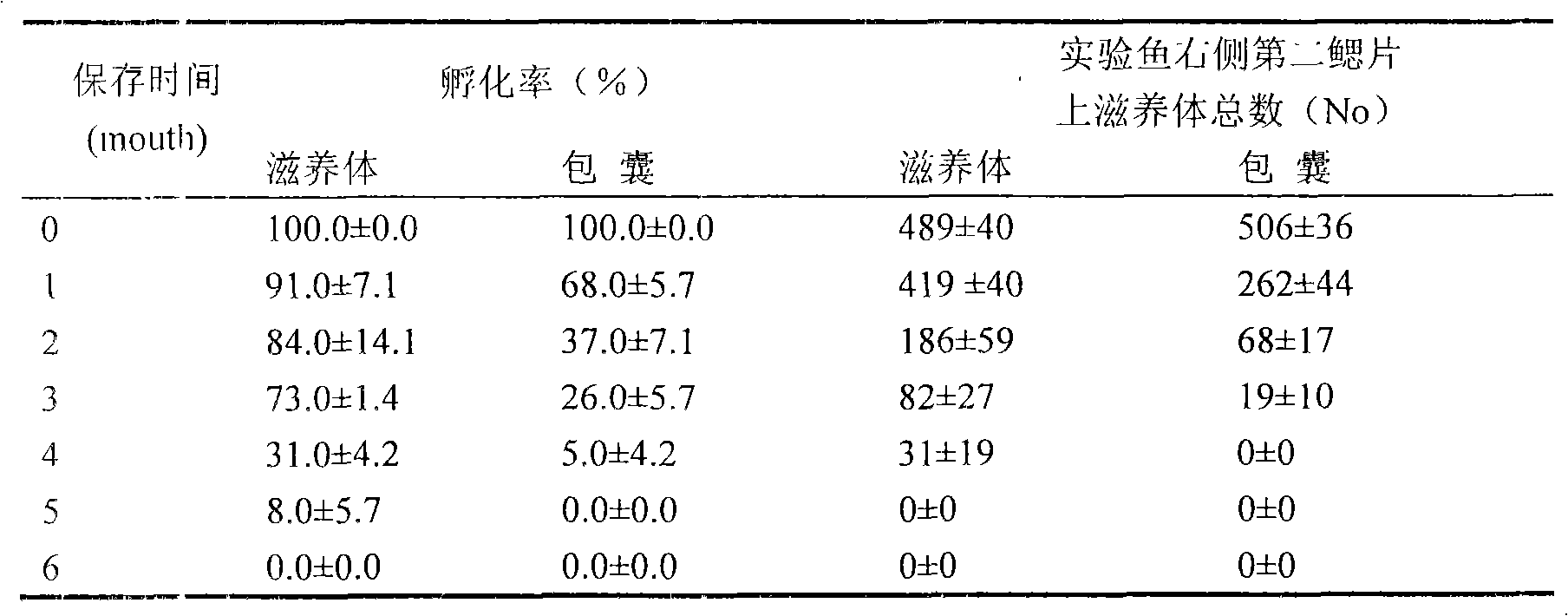Low temperature storage method for cryptocaryon irritans trophont and cyst
A technology that stimulates Cryptonucleosis and cryopreservation, applied in the directions of microorganism-based methods, biochemical equipment and methods, microorganisms, etc., can solve problems such as interruption of passage of worm strains, economic and time waste, aging, etc.
- Summary
- Abstract
- Description
- Claims
- Application Information
AI Technical Summary
Problems solved by technology
Method used
Image
Examples
Embodiment 1
[0019] Embodiment 1 stimulates the preservation method of the trophozoite and cyst of Cryptocaryon
[0020] Collect the trophozoites and cysts of Cryptocaryon stimuli, put them into 24-well tissue culture plates (50 parasites per well) and 5cm petri dishes (1000 parasites per petri dish), respectively, at 8-15°C Store in an artificial climate box with a relative humidity of 90% and 12hr light / 12hr light. In order to ensure consistent storage conditions, put all 24-well tissue culture plates and petri dishes containing parasites into a 10L beaker, add 5L sterilized seawater, keep a small amount of gas, and change the sterilized seawater every 5d. The water volume is 2L. The seawater for cultivating parasites was first filtered, then sterilized at 120° C. for 30 minutes, and 100 IU / ml of penicillin and 100 ul / ml of streptomycin were added before use.
Embodiment 2
[0021] Example 2. Validity test of cryopreservation stimulating trophozoites and encapsulation methods of Cryptocaryonia
[0022] Collect trophozoites and cysts of Cryptocaryon stimuli, store them at 8-15°C according to the above method, and test the hatching rate of trophozoites and cysts at 27.0°C and the infectivity of hatched larvae every one month. It was found that with the increase of storage time, the hatching rate of trophozoites and cysts and the infection rate of larvae would gradually decrease, and the trophozoites and cysts stored for 3 months at 12°C could still recover. Infectious larvae hatch. Larvae hatched from trophozoites stored at 12°C for 4 months can reproduce a large number of offspring under suitable conditions, and the virulence of the offspring has not decreased, because they are more sensitive to eggs of the same size than before storage. The lethal dose of pomfret was not lowered.
PUM
 Login to View More
Login to View More Abstract
Description
Claims
Application Information
 Login to View More
Login to View More - R&D
- Intellectual Property
- Life Sciences
- Materials
- Tech Scout
- Unparalleled Data Quality
- Higher Quality Content
- 60% Fewer Hallucinations
Browse by: Latest US Patents, China's latest patents, Technical Efficacy Thesaurus, Application Domain, Technology Topic, Popular Technical Reports.
© 2025 PatSnap. All rights reserved.Legal|Privacy policy|Modern Slavery Act Transparency Statement|Sitemap|About US| Contact US: help@patsnap.com


